During my every day 15 minutes walk down to take the bus to work (the Swiss Ski School St. Moritz) I’m pretty often finding myself listening to podcasts. I just love podcasts. A podcast is simply a series of spoken articles, or audio episodes, all focused on a particular thing (a topic or a theme). I think it is a great way to learn directly from experts about things you are interested in, completely on demand and sometimes even while multitasking. Another benefit of podcasts is that you cut down your screen time. In fact, studies show that the brain is more active while listening to podcasts than when watching television. This is because podcasts require listeners to use their imagination rather than spoon-feeding consumers with visual accompaniment. So for the sake of your eyes and to stimulate your imagination, try to listen to podcasts every day!
That’s how I found a very interesting network called BLISTER Review. An outdoor media company that produces, as they claim, «honest & in-depth gear reviews, podcasts, and more». On one of their different podcasts, the GEAR30, there is this series of interviews with Matt Manser, the product manager of Atomic Ski Boots. And trust me, every second of it is really worth it.
In a couple of those episodes, they talk about the ski boot’s forward lean angles. A very important yet not very well-known aspect of ski boots.
On my setup I tend to be a «very high degree of forward-lean» kind of guy. I always felt that it really helps me to stay forward, particularly on steeps. If you would remove the rear spoilers in my ski boots, for example, I would rather go to have a nice Swiss Alps fondue but no skiing (at all) for me. Actually, I’ve never liked that new trend of boot manufacturers building their boots with their cuffs in a more «upright» position. That type of boots put me in the backseat easily.
But first things first, what is forward lean? Forward lean is the forward tilt of the upper cuff (shell and liner included) of the boot, which makes the leg tilt forward and stay in good fore-aft balance during a huge range of vertical motion of the skier.

Forward-lean numbers
13-15 degrees is the average medium forward-lean in most commercial ski boots. More upright (13 degrees or less) are commonly found in freestyle ski boots. But, on the opposite, racing boots have aproximately 17 degrees of forward lean, or even more in WC athletes.
Something interesting that Matt Manser said in the interview is that most people tend to be really amazed when they find out how much forward lean racers actually use. World Cup athletes tend to use a huge amount of forward lean in their boots. And that goes against the actual trend of boot manufacturers to build boots with a more «upright allaround neutral stance» (12-13 degrees), trying to make ski boots «more confortable», but definitely decreasing the performance (from my perspective).
For example, Marcel Hirscher, the most successful ski racer of all time used this setup: 18 degrees of boot’s cuff forward-lean, plus cuff spoilers mounted into the cuff itself, plus a 5 degrees liner rear spoiler… So that is more than 20 degrees of forward lean… just massive!
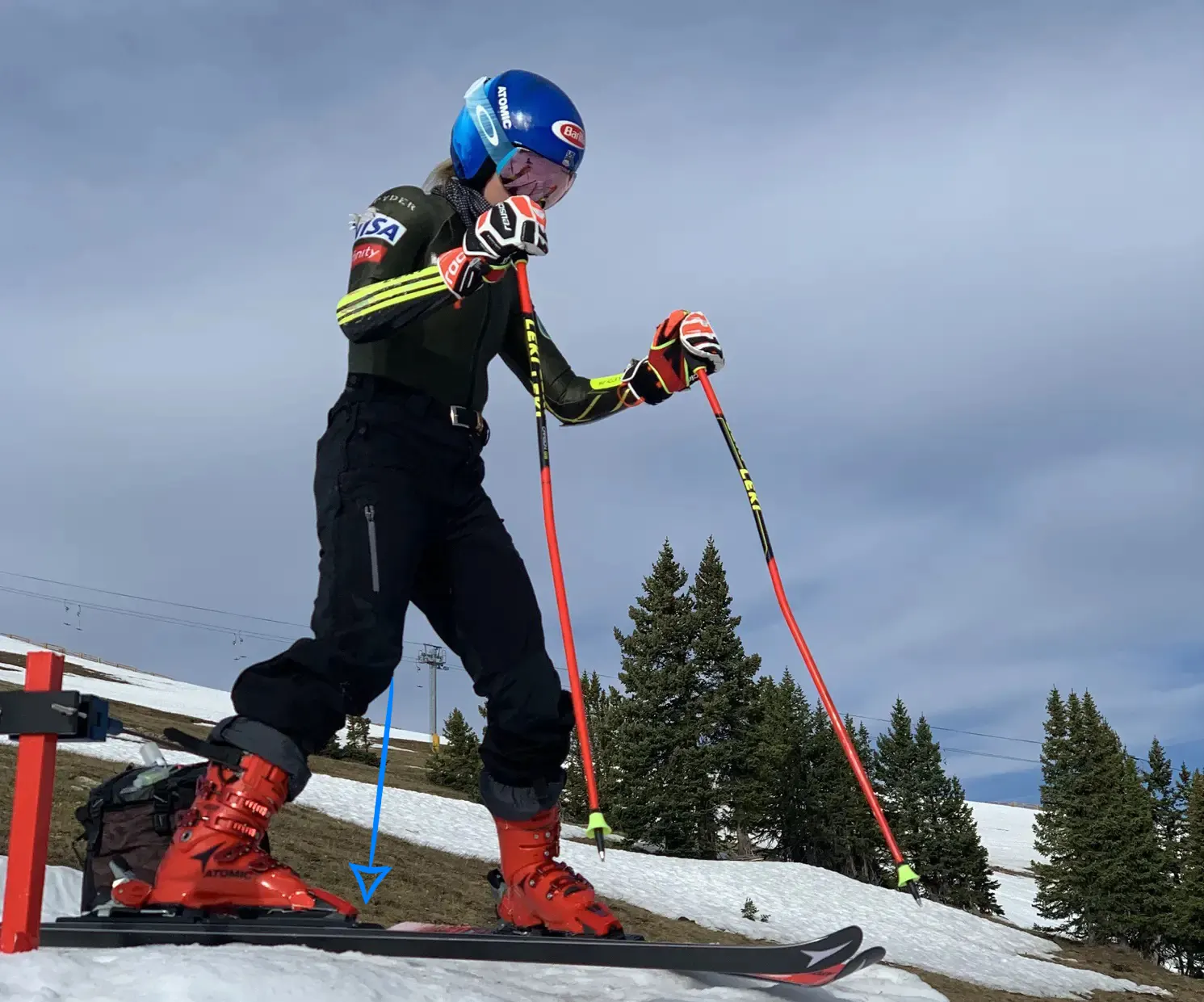
Mikaela Shiffrin training at Copper Mountain, CO, USA. Note again, the amount of forward lean she has in her setup. Note how forward the knee is, over the front binding (blue arrow).
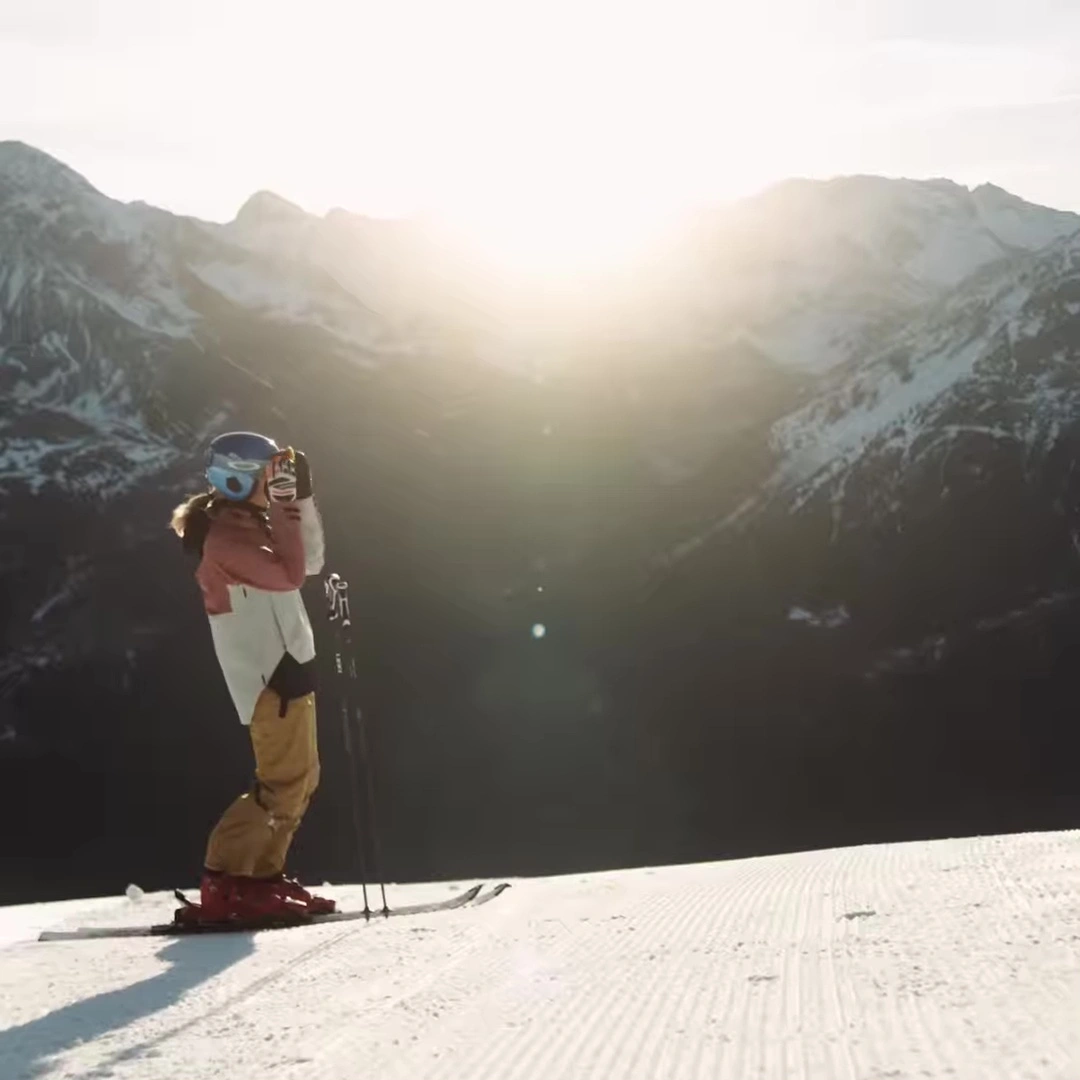
Another picture of Mikaela Shiffrin while she was freeskiing for an ADIDAS Terrex ad. Look how her knees are way forward, actually over the front binding.
Furthermore, quite a few of professional freeride skiers use racing (and racing-style) ski boots with lots of forward-lean to perform on the steep and wild descents they do.
It is quite the norm that the steeper the terrain (on a race course or off-piste), the more forward-lean the athletes request, in order to help them keep forward on their skis.
But, very important: that doesn’t mean high forward lean angles are good for everybody. If the skier has limited ankle dorsiflexion, high forward lean can be disastrous. Many skiers lack the sufficient range of ankle flexion («dorsiflexion») to even fit into a boot with a lot of forward lean, and attempting to do so can cause severe problems (heel lifting, aquiles tendon injuries, etc). So please, check it with your local boot fitter before making drastical changes in your setup.
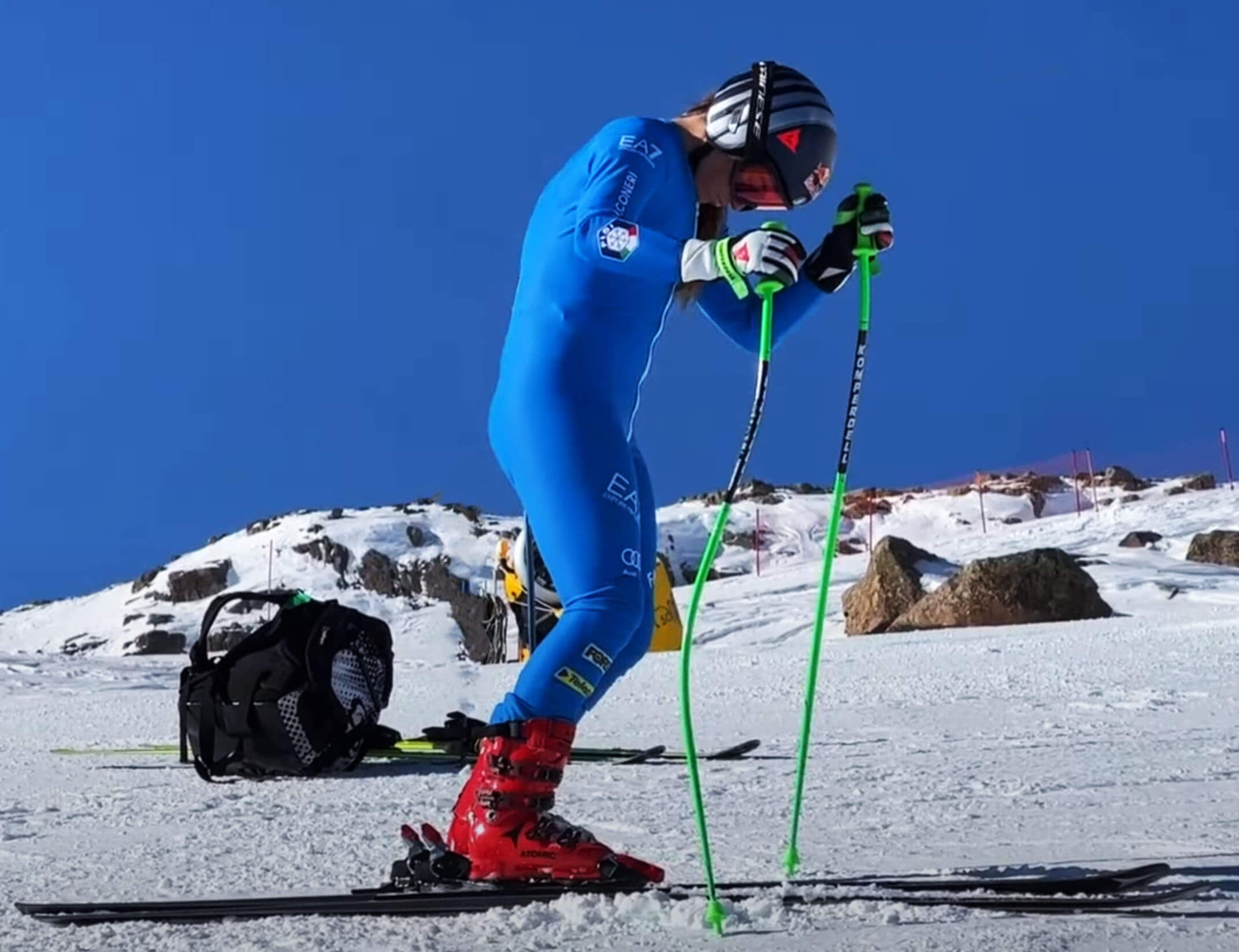
Another great example of the amount of forward-lean World Cup athletes use comes from Sofia Goggia, the Italian legend. In the picture above, you can appreciate how forward her knee is, also over the front binding. This picture is a still frame from a video of her training with Mikaela Shiffrin in San Pellegrino.
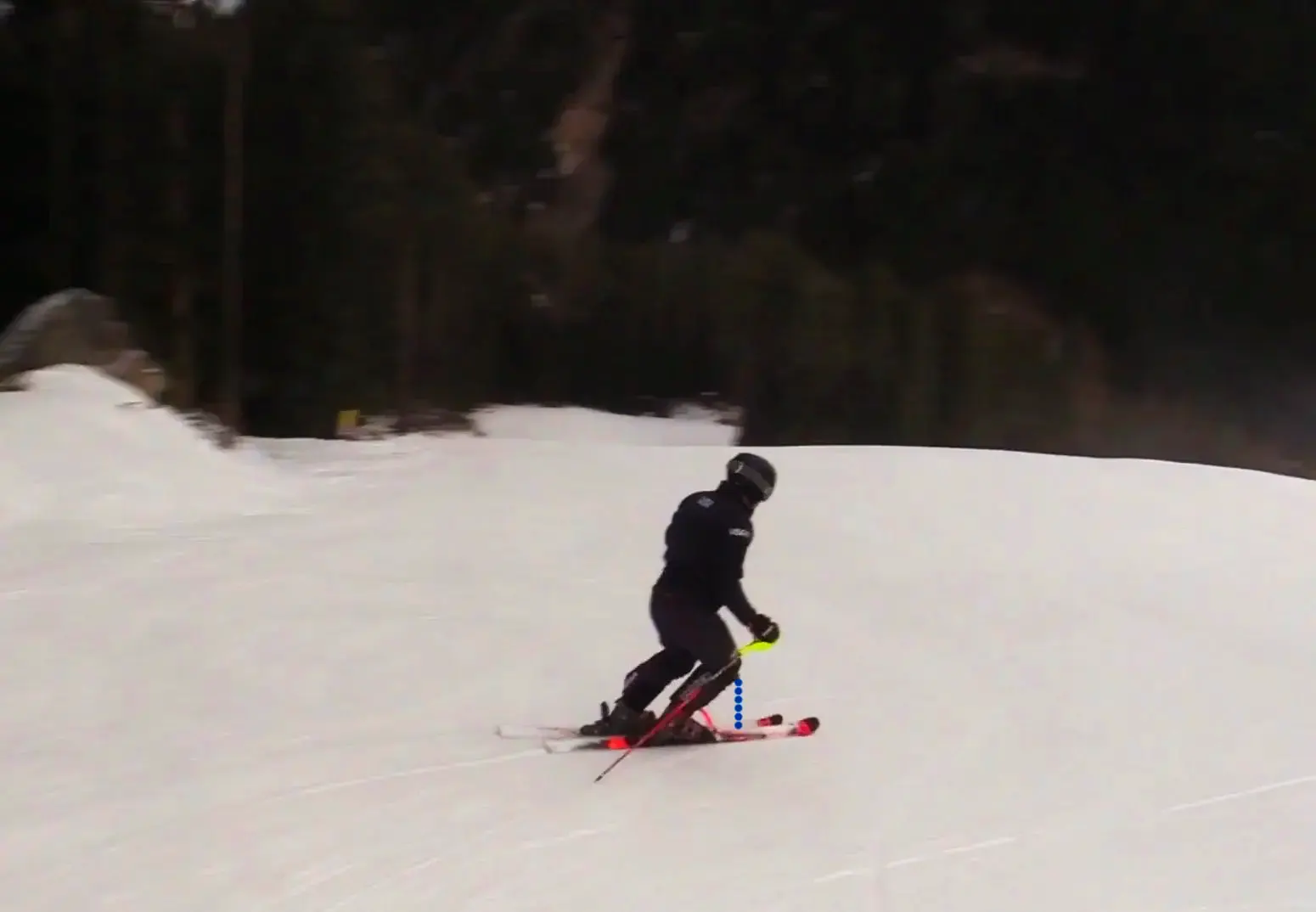
One example more with Jimmy Krupka, a US Ski Team athlete and host of the Arc City Podcast. Note how forward his knees are. Impressve.
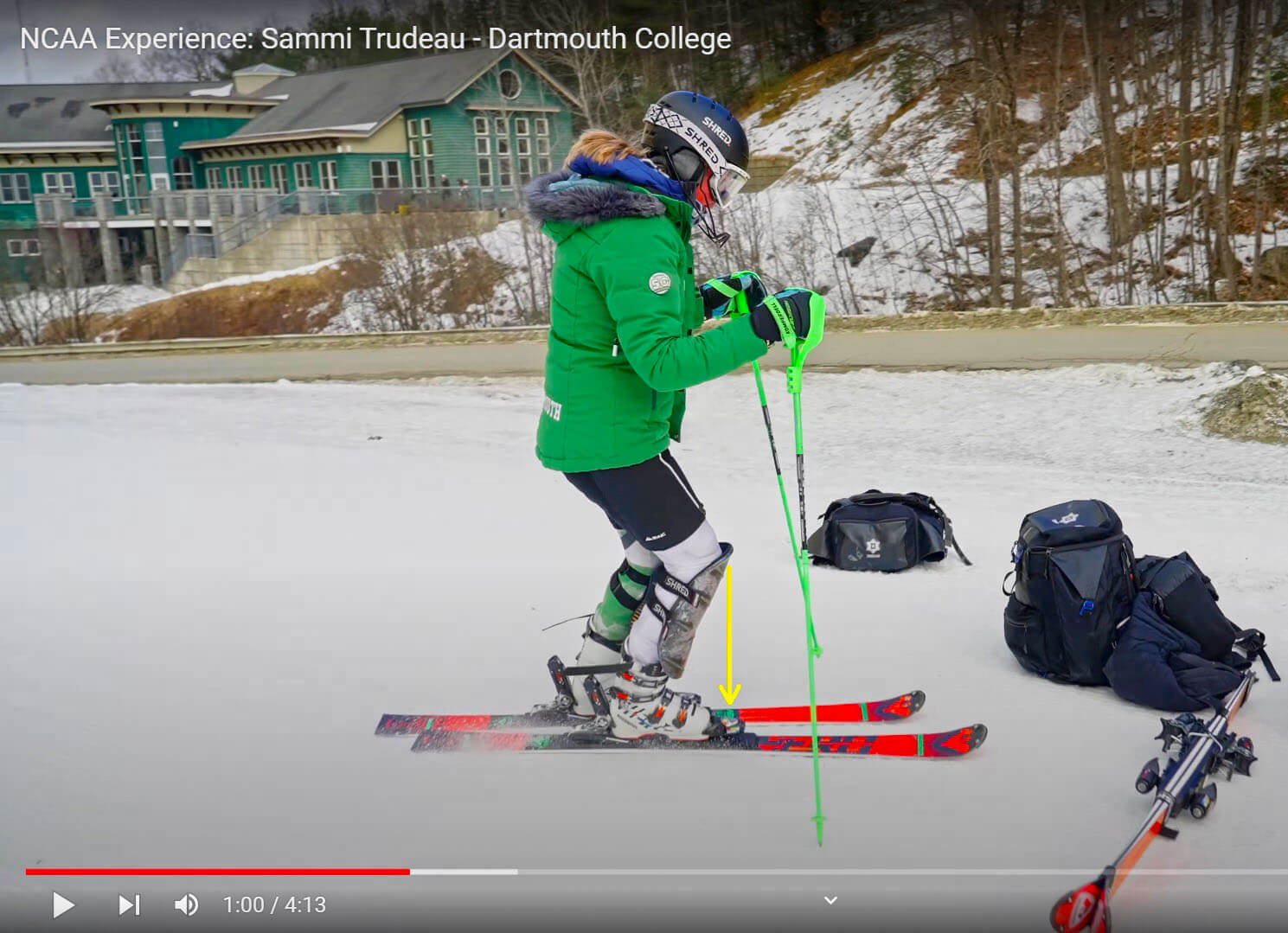
One example more with Darmouth College student-athlete Samantha (Sammi) Trudeau on her Slalom setup.
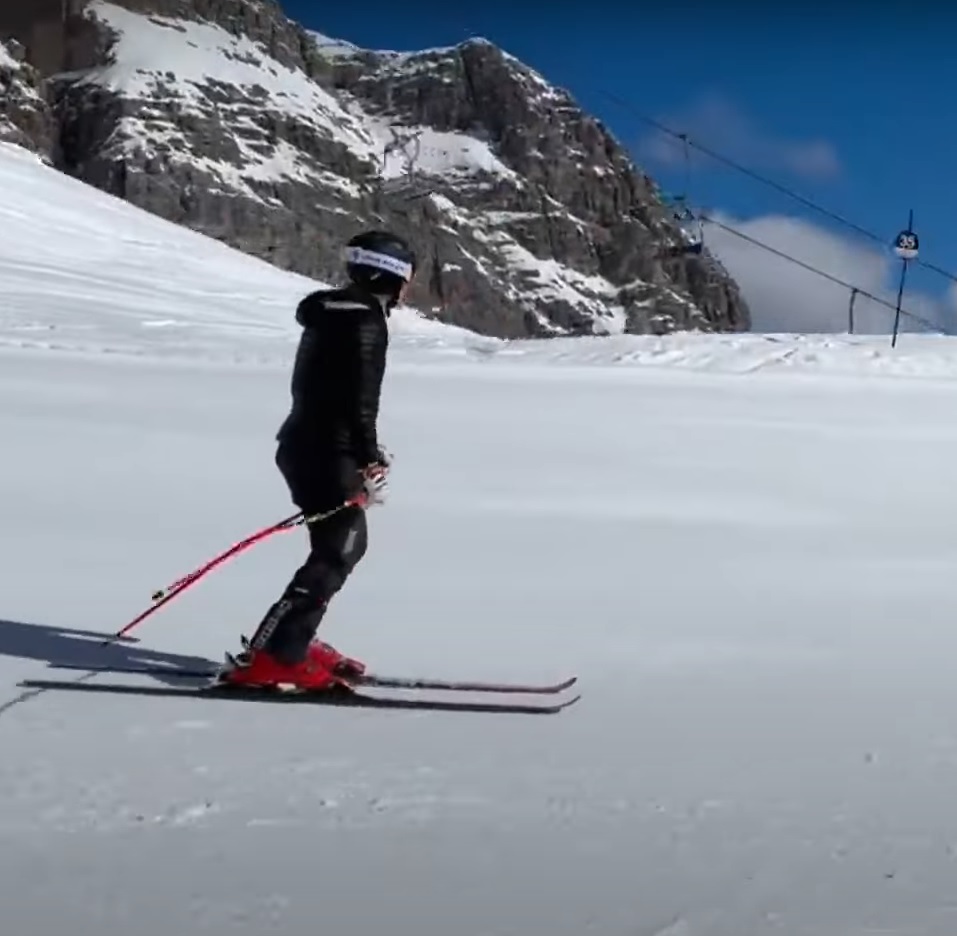
Mikaela Shiffrin freeskiing with GS skis on the Olympia delle Tofane, the classic women’s World Cup downhill ski course in Cortina d’Ampezzo, Veneto region, Italy. Note the amount of forward lean of her boots, and how her torso remains alomst «straight up» when «resting» on the skis and not actually «skiing».
Forward lean adjustment
Some boots have the possibility of increasing the forward lean, in two possible ways: acting on the liner itself, or acting on the shell.
The usual method is to attach a velcro rear spoiler to the back part of the liner. The lower you attach it to the liner, the more forward tilt you’ll get. This method is not available in every ski boot, but is very common on race plug ski boots (92mm last), and the high-performance «racing style» category (95-96 mm last).

Other ski boots have an adjustment in the back of the cuff’s shell. Sometimes the forward lean is adjusted via T-shaped shims, situated between the cuff and lower shell (like the Atomic Redster’s). Others, like the Fischer’s RC4 GT below, have a plate in the boot’s cuff back spine.
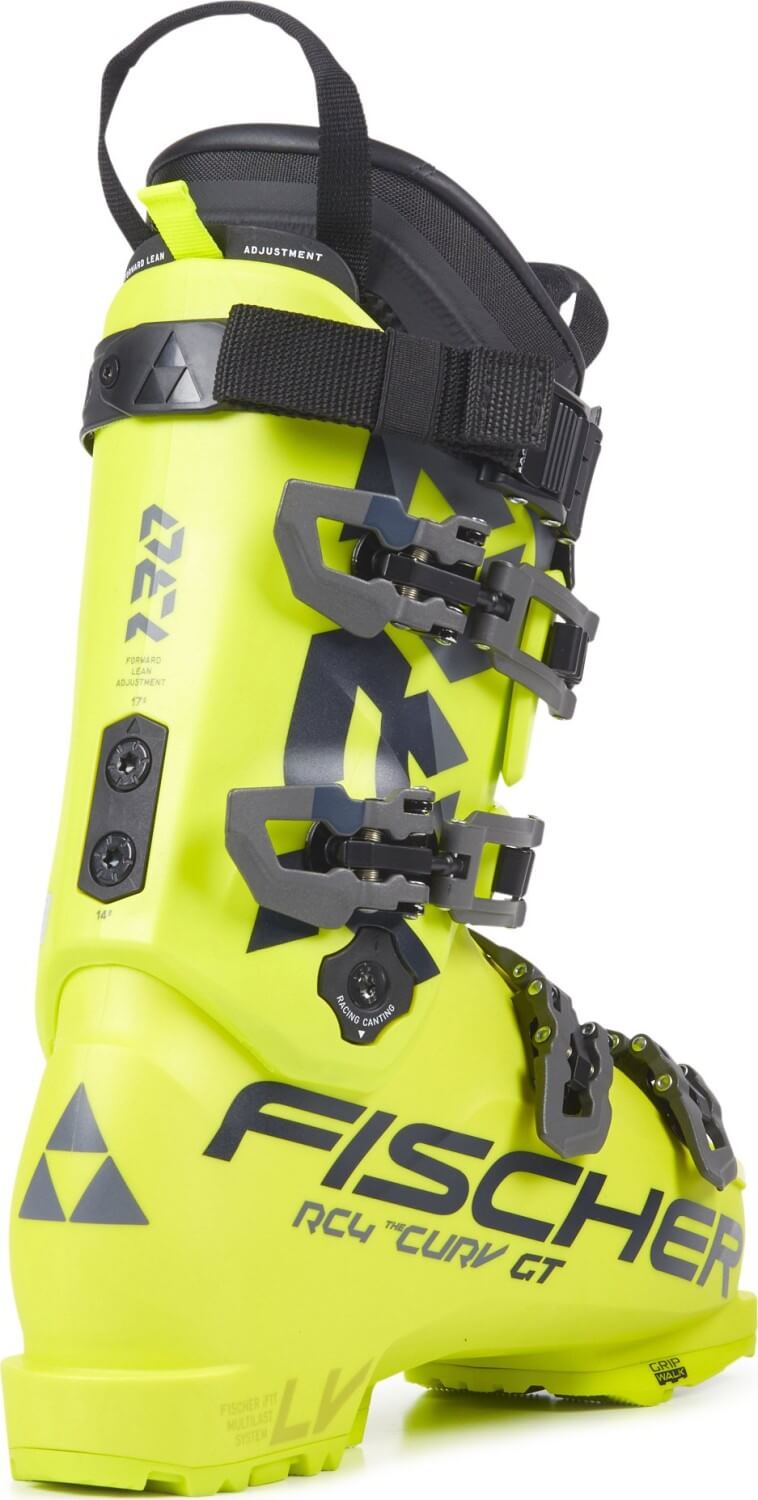
Below is another example of a plastic shim added to the back of the cuff to increase forward lean. This boot belongs to Alexandr Khoroshilov, a former Russian World Cup alpine ski racer specializing in slalom. He gained his first victory in 2015 in the slalom at Schladming and became the first Russian male to win a World Cup race in 34 years since Aleksandr Zhirov of the Soviet Union in 1981. Again, huge forward lean angles are common in the slalom discipline.
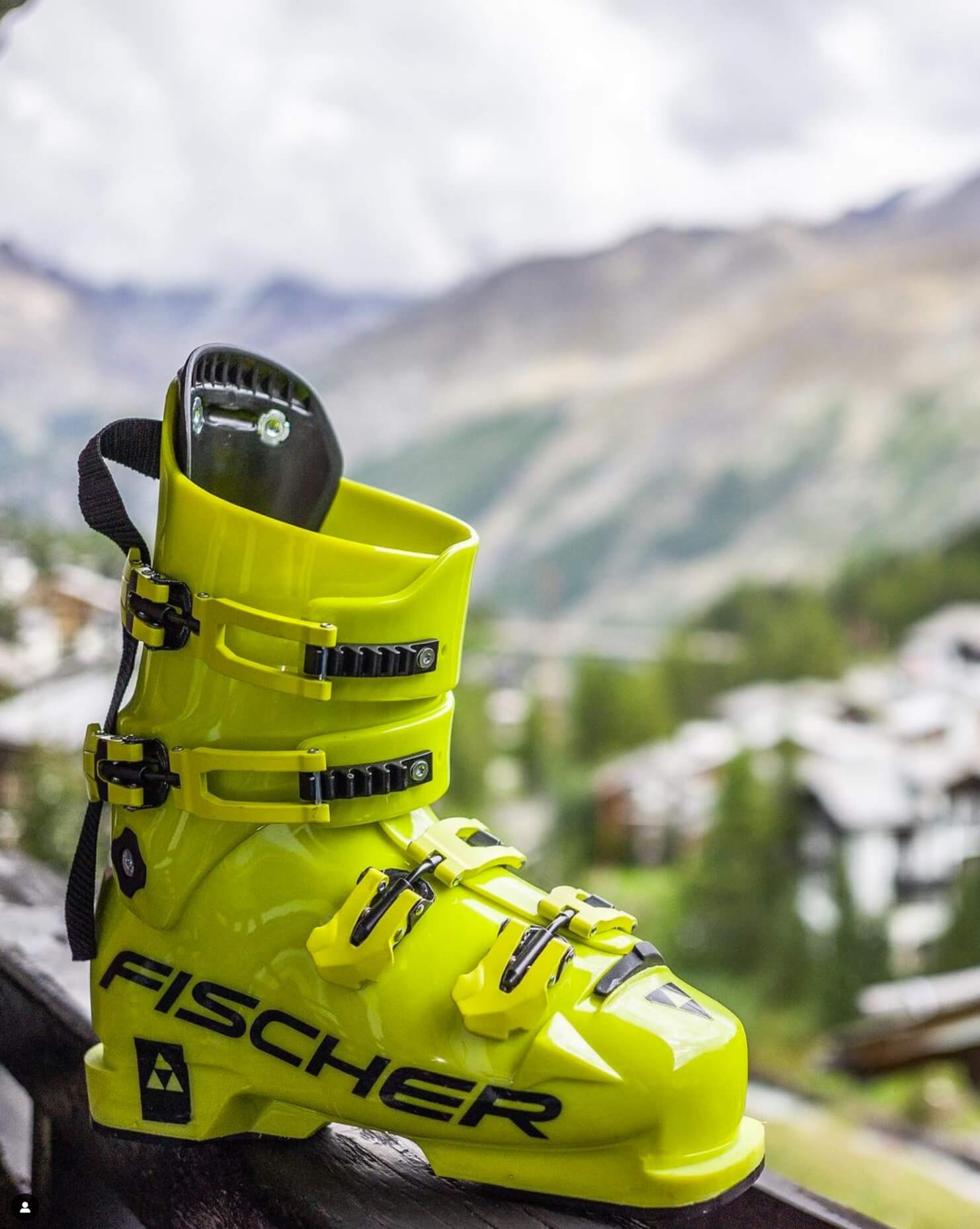
Conclusion
Forward lean in ski boots is a not well-known aspect of the setup, but it has a tremendous effect on how you perform and feel your skiing.
I recommend every skier to tinker a little bit with it and try different setups. Maybe you find high-forward lean setups something you love and cannot ski without… (like me 😉 )
Keep ripping some arcs!
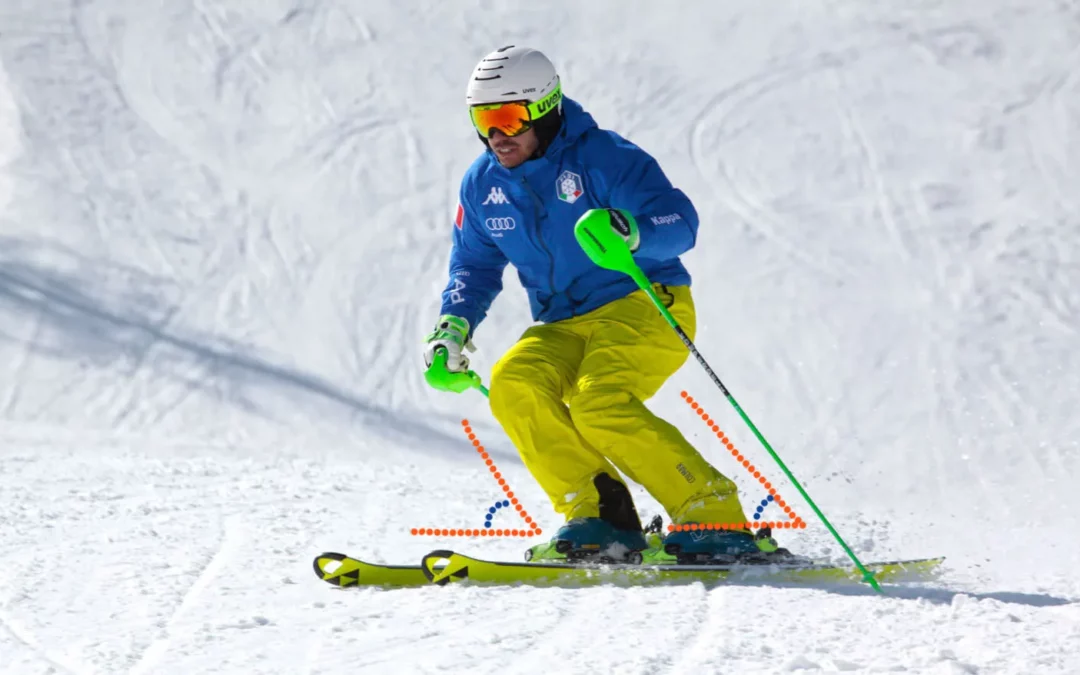

Recent Comments